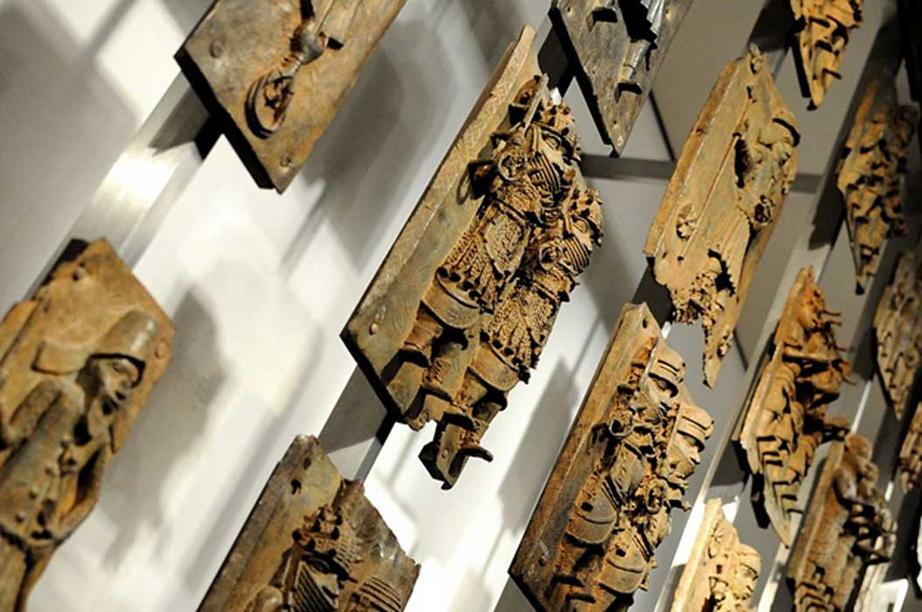The Benin Bronzes: a tragic story of slavery and imperialism cast in brass
The Benin Bronzes is the name given to a group of artifacts produced by the Benin Empire, which occupied the area which is today Nigeria.
The Benin Bronzes consist of several thousand commemorative plaques and sculptures that were made of brass of variable composition (despite being called ‘bronzes’). Whilst such metalwork has already been produced by the craftsmen of the Benin Empire as early as the 13th century, many of the Benin Bronzes were created between the 15th and 16th centuries. The Benin Bronzes were seized by British forces during the Benin Expedition of 1897, and were given to the Foreign and Commonwealth Office. Many of the pieces were later sold, and ended up in the collections of museums around the world. Today, there are calls for the bronzes to be repatriated to their country of origin.
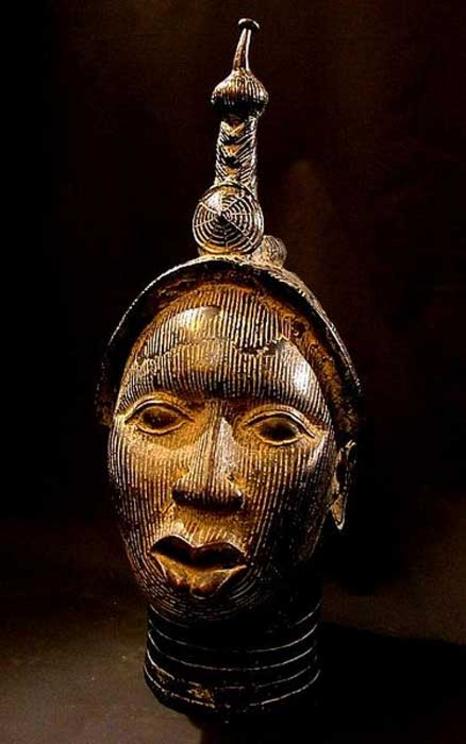 Benin Bronze Ife bust.
Benin Bronze Ife bust.
A Skillful Creations
Brass plaques and sculptures have been created by the Edo (known also as the Bini), the indigenous people of the Benin Empire, as early as the 13th century, prior to their contact with Europeans. These pieces of metalwork were produced using a process known as lost-wax casting, a technique that was discovered as early as the Copper Age. It has often been remarked that the Benin Bronzes are some of the best examples of sculptures produced by this technique.
The Benin Bronzes depict a variety of different themes. On the plaques, for instance, human figures, either alone, in pairs, or in small groups arranged hierarchically around a central figure, are represented. As for the sculptures, common themes include animals, human beings and scenes from life in the royal court of Benin. Interestingly, following their contact with the West, Europeans also began to be portrayed by the Edo craftsmen in their artworks. Portuguese soldiers / mercenaries, for instance, are often depicted, and may be recognised by the firearms they carry.
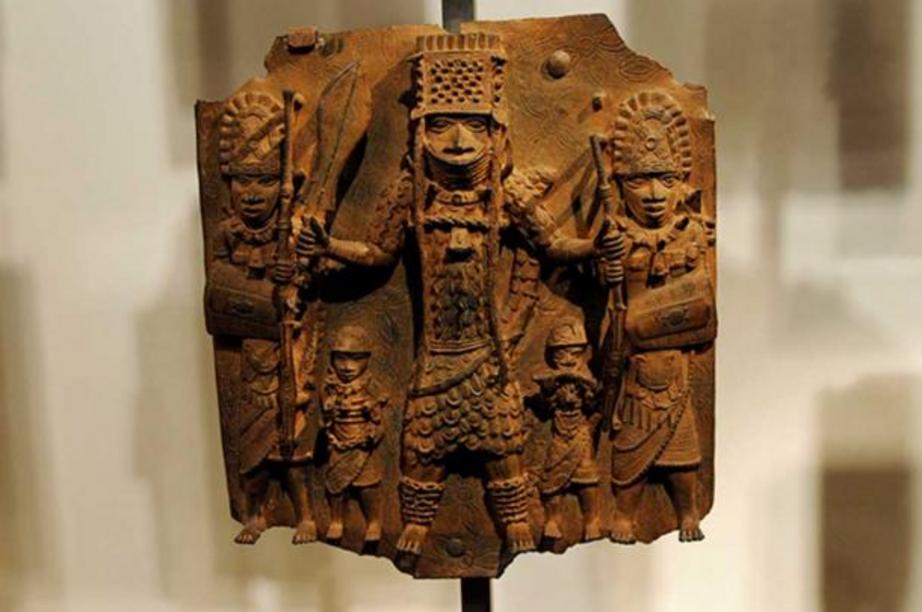 The Kingdom of Benin is famous for its brass castings. This finely detailed example is currently held at the British Museum.
The Kingdom of Benin is famous for its brass castings. This finely detailed example is currently held at the British Museum.
A high level of skill was required for the production of the Benin Bronzes. For example, the craftsmen who made the Benin Bronzes paid great attention to the details of their creations. This is evident, for instance, in the minute details found on the attire worn by the human figures. Further proof of the craftsmen’s mastery of their art can be seen in the fact that the surfaces of the pieces were designed to show contrasts when the metal was irradiated by a source of light. Whilst the human figures represented are more naturalistic than most African art of that period, it may be noted that the facial features of most figures are exaggerated from their natural proportions.
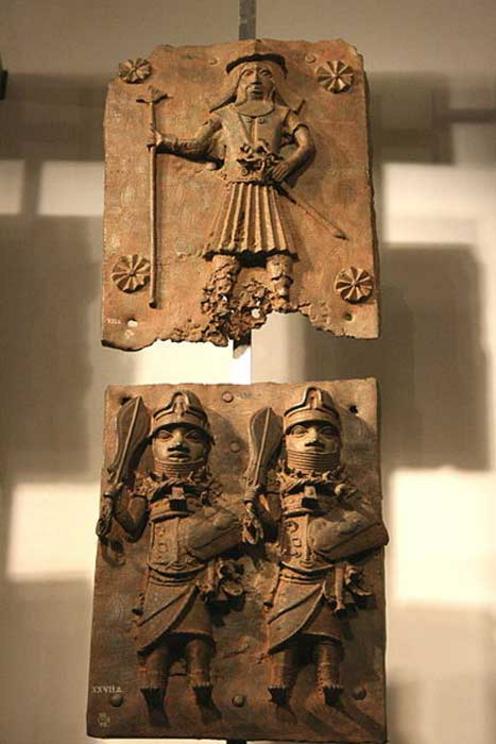 Benin kingdom (Nigeria) mid 16th to 17th century.
Benin kingdom (Nigeria) mid 16th to 17th century.
The Human Cost of the Bronzes
The metal required for the production of the Benin Bronzes was acquired in a form known as manilla. This was a form of money in the shape of bracelets that were usually made either of bronze or of copper. These were brought to the Benin Empire by European traders, and were usually exchanged for slaves. Therefore, it may be said that the history of the Benin Bronzes is closely connected to the slave trade, and that these beautiful pieces of art were made possible by the heinous trade in human lives.
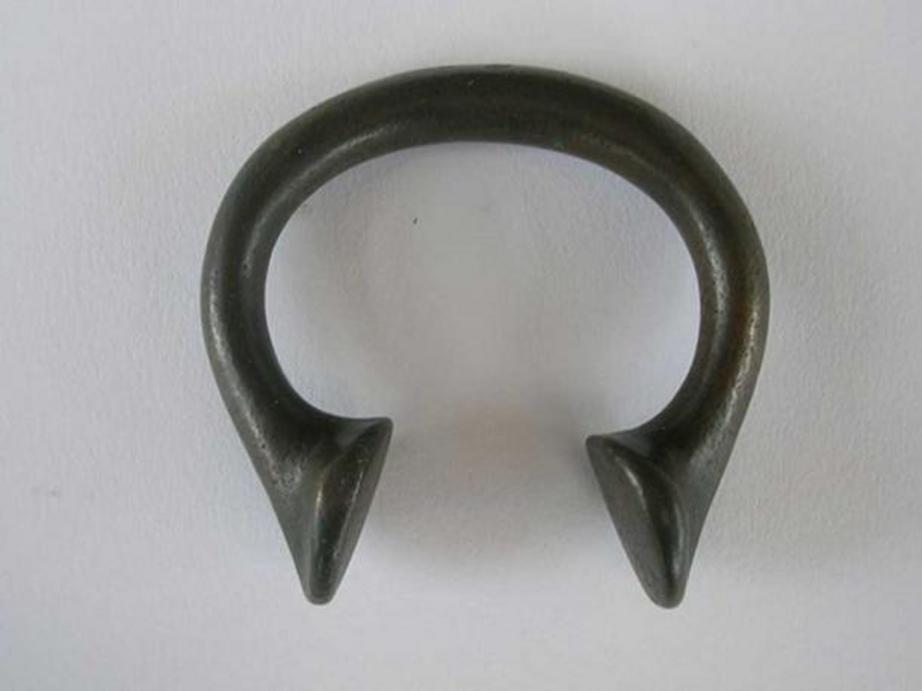 An Okpoho variety of Manilla from the Igbo people of southeastern Nigeria.
An Okpoho variety of Manilla from the Igbo people of southeastern Nigeria.
Nevertheless, this side of the story is often overshadowed by another episode in the history of the Benin Bronzes. In 1897, a punitive expedition known as the Benin Campaign of 1897 was launched by the British against Benin City. The Benin Empire was defeated, Benin City was burned and looted and the Benin Bronzes were seized by the victorious British troops as war booty. These pieces of art were sent to the Foreign and Commonwealth Office, many of which were then sold to cover the cost of the expedition. A large number of the Benin Bronzes ended up in the British Museum, whilst other pieces were purchased by museums around the world.
 Benin Bronzes portrayed many different characters, including Europeans
Benin Bronzes portrayed many different characters, including Europeans
Fair Spoils or Time for Repatriation?
There have been many calls over the years for the Benin Bronzes to be repatriated to their country of origin. Occasionally, these have met with success. In 2014, for example, two pieces of the Benin Bronzes were returned to Nigeria by Mark Walker, the grandson of one of the soldiers who took part in the campaign of 1897. In 2016, a bronze cockerel was taken down from the hall of Jesus College, Cambridge University, and there are discussions underway with the possibility that the sculpture would be returned to Nigeria. For the time being, however, many museums, such as the British Museum, where many of the Benin Bronzes are today kept, are still resisting the calls to repatriate these artifacts.
For full references please use source link below.

